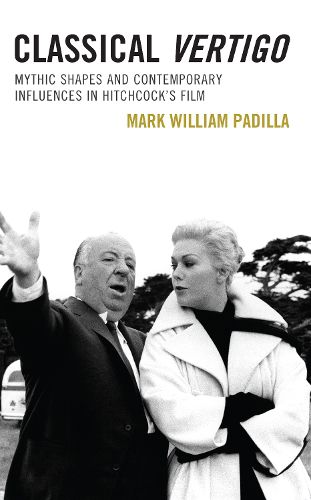Readings Newsletter
Become a Readings Member to make your shopping experience even easier.
Sign in or sign up for free!
You’re not far away from qualifying for FREE standard shipping within Australia
You’ve qualified for FREE standard shipping within Australia
The cart is loading…






Alfred Hitchcock's Vertigo has dazzled and challenged audiences with its unique aesthetic design and startling plot devices since its release in 1958. In Classical Vertigo: Mythic Shapes and Contemporary Influences in Hitchcock's Film, Mark William Padilla analyzes antecedents including: (1) the film's source novel, D'entre les morts (Among the Dead), (2) the earlier symbolist novel, Rodenbach's Bruges-la-morte, and (3) the first-draft screenplay of Maxwell Anderson, a prominent Broadway dramatist and Hollywood scenarist from the 1920s to the 1950s. The presence of Vertigo amid these texts reveals and clarifies how themes from Greco-Roman antiquity emerge in Hitchcock's project. Padilla analyzes narrative figures such as Prometheus and Pandora, Persephone and Hades, and Pygmalion and Galatea, as well as themes like the dark plots of Greek tragedy, to reveal how Hitchcock used allusive form to construct an emotionally powerful experience with an often-minimalist script. This analysis demonstrates that Vertigo is a multifaceted work of intertextuality with artistic and cultural roots extending into antiquity itself.
$9.00 standard shipping within Australia
FREE standard shipping within Australia for orders over $100.00
Express & International shipping calculated at checkout
Alfred Hitchcock's Vertigo has dazzled and challenged audiences with its unique aesthetic design and startling plot devices since its release in 1958. In Classical Vertigo: Mythic Shapes and Contemporary Influences in Hitchcock's Film, Mark William Padilla analyzes antecedents including: (1) the film's source novel, D'entre les morts (Among the Dead), (2) the earlier symbolist novel, Rodenbach's Bruges-la-morte, and (3) the first-draft screenplay of Maxwell Anderson, a prominent Broadway dramatist and Hollywood scenarist from the 1920s to the 1950s. The presence of Vertigo amid these texts reveals and clarifies how themes from Greco-Roman antiquity emerge in Hitchcock's project. Padilla analyzes narrative figures such as Prometheus and Pandora, Persephone and Hades, and Pygmalion and Galatea, as well as themes like the dark plots of Greek tragedy, to reveal how Hitchcock used allusive form to construct an emotionally powerful experience with an often-minimalist script. This analysis demonstrates that Vertigo is a multifaceted work of intertextuality with artistic and cultural roots extending into antiquity itself.